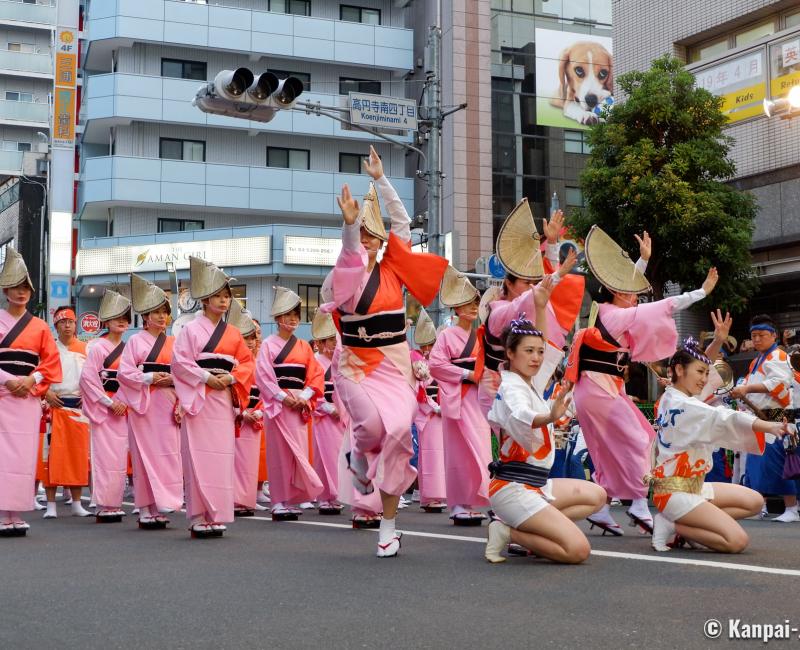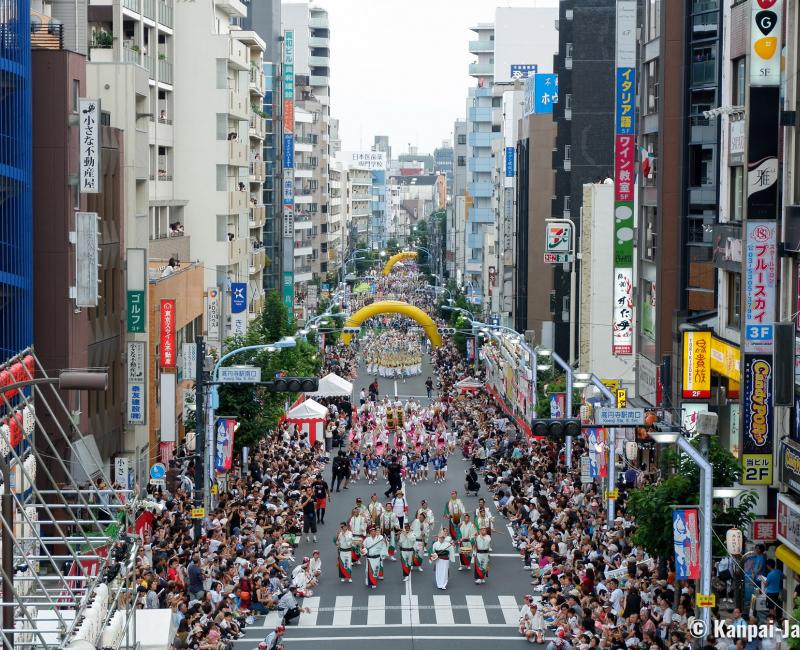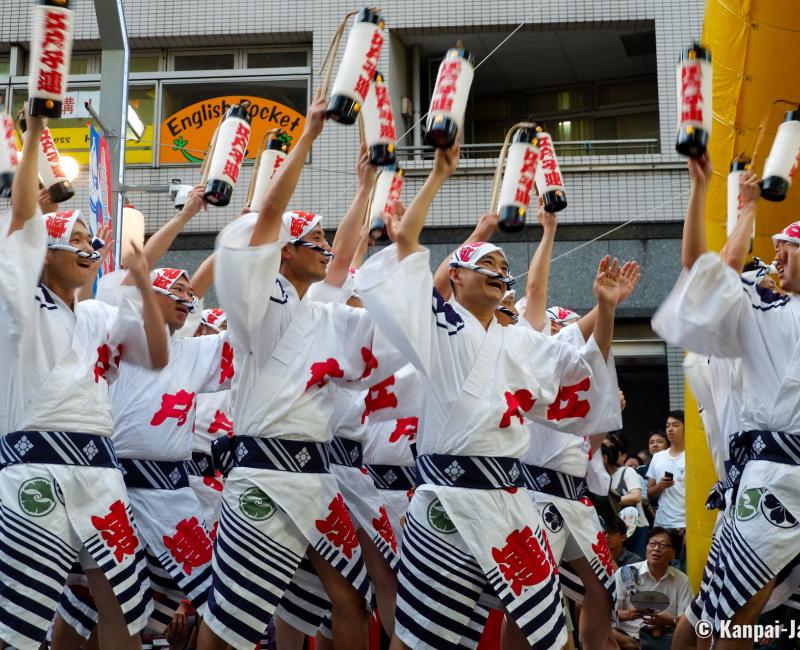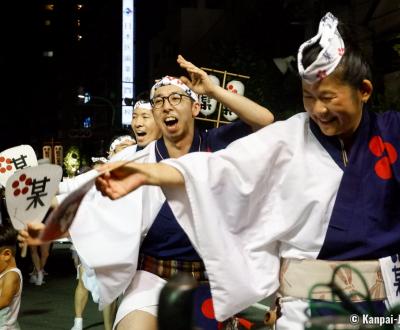Koenji Awa-Odori
The Great Traditional Dance Festival in Tokyo
Koenji Awa-Odori is a traditional dance festival taking place each year in August in Koenji district, in the west of Tokyo’s downtown. About 10,000 Awa-odori dancers gather in Ren groups to parade performing an original choreography with the same basic steps and following the rhythm of a lively music. The friendly atmosphere and memorable shows are the staples of entertaining evenings.
Koenji Awa-Odori is Tokyo’s version of Tokushima’s famous matsuri, the biggest Awa-odori festival in Japan taking place in mid-August.
The festival focuses on the traditional dance, whose origins can be traced to O-bon, a Buddhist ritual held to celebrate the return of the deceased in the world of the living for a few days. Awa-odori later became synonym to a neighborhood festival, when in 1586, lord Iemasa Hachisuka organized a huge banquet and offered a lot of alcohol to celebrate the completion of Tokushima’s castle. The legend has it that the city dwellers drank too much and started to dance and play music in the streets.

A recent matsuri but deeply rooted in tradition
Koenji’s yearly festival began in 1957 and was then named Koenji Baka Odori, which means "the fools’ dance at Koenji". The festival finally gained credentials and was officially named Koenji Awa-Odori six years later, thanks to the involvement of professional dancers and traditional dance specialists. It thus became the most important festival in Tokyo regarding Awa-odori performances.
Today, many Ren groups, including musicians and dancers, men, women and sometimes children, participate in this great yearly event. Some are professionals, famous Ren that perform throughout Japan. Amateur groups, who have honed their show all year long, represent a neighborhood, an association, a club or a company.

Music and Awa-odori dance parade in the evening
The festival can be observed as soon as getting off the train at Koenji station, from 5 p.m. The groups successively parade until 8 p.m., and spectators can watch from the sides of the large Konen Dori avenue, that stretches toward south until Shin-Koenji subway station. To better enjoy the show, the best is to find a seat at a cafe with an elevated terrace, or to make one’s way through the crowd to secure a free spot on the side of the road. Note however that it is necessary to arrive in advance, unless one don’t mind disturbing the crowd and have people grumbling.
Dancers always don traditional costumes:
- Colorful yukata, geta clogs and plaited hats for women,
- Light happi jacket and tabi footwear for men.
To the sound of taiko drums, shamisen lutes and flutes, various sophisticated choreography are performed, that are lively, sometimes funny or endearing. For example, spectators may encounter:
- Men sprinting like crazy when the music starts,
- Little Japanese children doing their best to dance and imitate the adults’ movements,
- A funny old man wiggling at the end of the parade and stealing the show with his moves.

A festival characterized by collective enthusiasm
The ambiance at Koenji Awa-Odori is particularly joyful and hearty. In the smaller secondary streets, one can follow the dance groups and dance as well to the traditional festival tune:
Erayatcha, erayatcha, yoi yoi yoi yoi!
Odoru ahouni miru ahou onaji ahounara odorana sonson!
Yatto-saa! Yatto-saa!
Which means:
It's a fool who dances and a fool who watches; if both are fools, you might as well dance!
"Erayatcha, erayatcha, yoi yoi yoi yoi!" and "Yatto-saa! Yatto-saa!" are shoutings to encourage the dancers, without specific meaning.
As for every festival in Japan, food and drinks stalls are every where along the streets and at the entrance of sacred grounds, such as Koenji Hikawa shrine. The thrift stores and other vintage shops of the area also take the opportunity to display their merchandise.
Koenji Awa-Odori is one of the most popular matsuri in the capital, with about one million spectators over the two days it lasts. And it is only natural, as the participants’ performance and the overall cheerfulness are guarantees to spend a very good evening. The Awa-odori effects even last a couple of days as simply humming the traditional and infectious festival song is sure to bring happiness and a lighthearted feeling.


